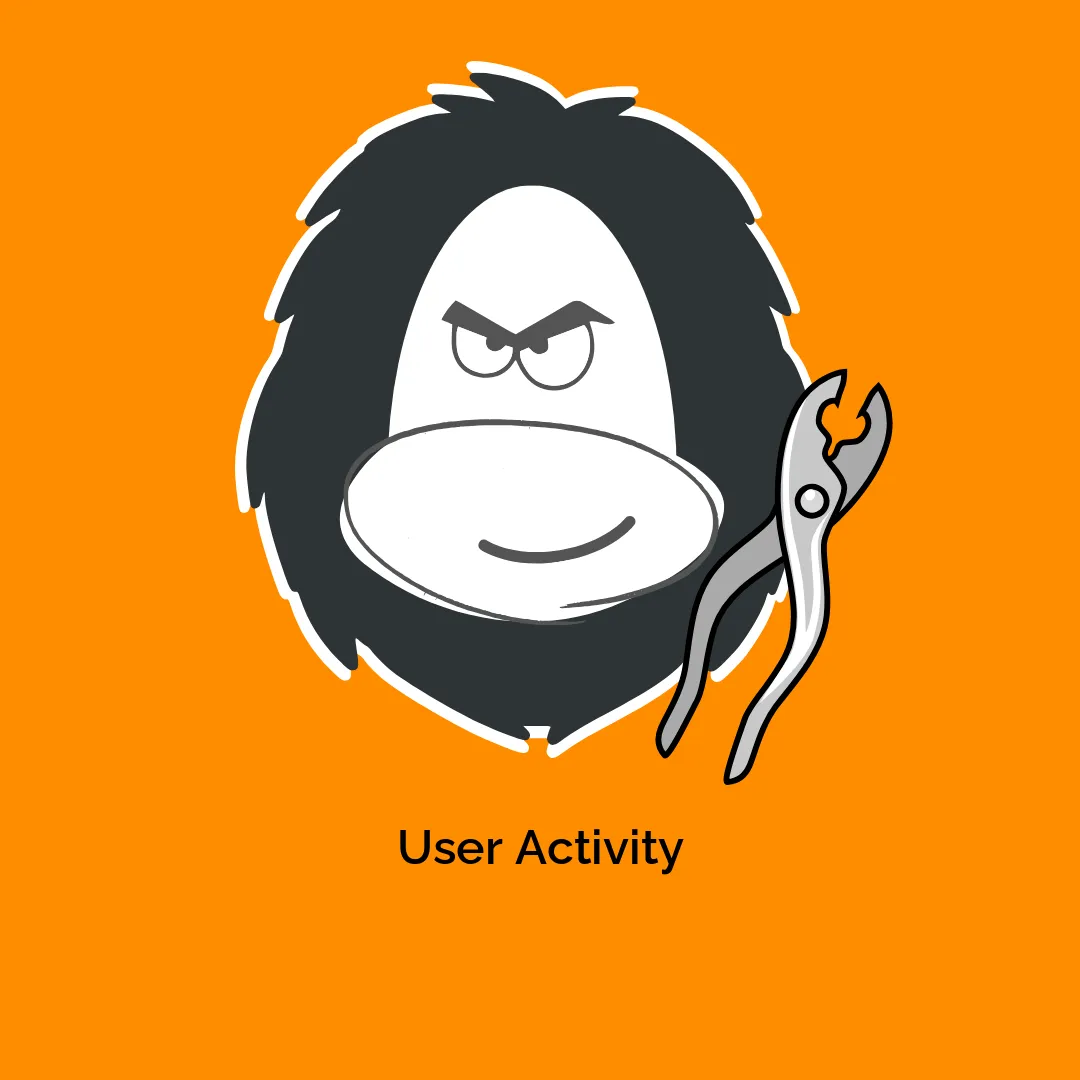Understanding User Activity in Website Management
Monitoring user activity has become a cornerstone of effective website management. By tracking the actions and behaviors of users, website owners can gain valuable insights into how their site is being used. This information not only enhances user experience but also contributes to strategic decision-making.
The Importance of Tracking User Activity
User activity refers to the actions and behaviors exhibited by individuals when they engage with a website. This can include everything from page visits and clicks to time spent on various sections of the site. Understanding user activity is crucial for several reasons:
-
Enhancing User Experience: By analyzing user behavior, website owners can optimize navigation and improve overall user satisfaction. For example, if users frequently abandon a shopping cart at a specific point, it may indicate a need for improvement in that area.
-
Data-Driven Decisions: With detailed logs of user activity, site administrators can make informed choices about content, design modifications, and marketing strategies. Data analytics can reveal what resonates with users, allowing for tailored content that meets user needs.
-
Identifying Trends and Patterns: Tracking user activity over time helps in recognizing trends. For instance, seasonal spikes in user activity can guide content creation or promotional efforts. Conversely, a decline in activity may indicate underlying issues that need to be addressed promptly.
-
Improving Security: Keeping a close eye on user actions can also aid in identifying fraudulent or malicious behavior. For example, unusual login attempts or sudden spikes in activity can trigger alerts that prompt further investigation.
-
Enhanced Customer Support: By understanding how users interact with the site, support teams can address common pain points, offer better assistance, and proactively resolve issues.
How to Track User Activity
There are various methods for tracking user activity effectively. Here are some popular strategies:
1. Web Analytics Tools
Web analytics tools, such as Google Analytics, are among the most common methods for tracking user activity. These platforms provide comprehensive data on user behavior, including page views, session duration, and user demographics. By implementing Google Analytics, website owners can gain insights into how effectively their content engages users and identify areas needing improvement.
2. Heatmaps
Heatmaps visualize where users click, scroll, and hover on a webpage. This tool is particularly beneficial for optimizing website layout and design. By examining heatmaps, website owners can discern which sections attract attention and which are ignored, allowing for adjustments to enhance user engagement.
3. User Session Recording
Recording user sessions offers an in-depth understanding of user interaction with the website. This technique captures actual user behavior, enabling website owners to see exactly how users navigate the site. Session recordings can be invaluable for identifying usability issues and areas for improvement.
4. A/B Testing
A/B testing involves comparing two versions of a webpage to determine which performs better. By changing specific elements—such as color schemes, button placements, or call-to-action wording—website owners can analyze user responses to identify which option generates higher engagement and conversions.
5. Custom Event Tracking
For more specific insights, implementing custom event tracking allows website owners to track particular actions, such as downloads, video plays, or form submissions. This tailored approach can yield valuable data regarding user activity pertinent to the goals of the website.
Analyzing User Activity Data
Once user activity has been logged, the next step is to analyze that data. Here are some critical aspects to consider when interpreting user activity data:
1. User Engagement Metrics
Metrics such as bounce rate, page views per session, and average session duration offer insight into how engaged visitors are with the content. A high bounce rate could indicate that visitors are not finding what they expected, whereas a longer average session duration may suggest that users find the content valuable.
2. Conversion Rates
Monitoring conversion rates—whether that means users signing up for a newsletter, completing a purchase, or filling out a contact form—provides a clear picture of how effectively the website drives user activity toward achieving specific goals. Analyzing these rates can help pinpoint successful elements or areas requiring improvement.
3. Sources of Traffic
Understanding where users are coming from is vital for assessing the effectiveness of marketing efforts. Traffic sources could include organic search, social media, referrals, or direct visits. Knowledge of which channels drive the most traffic and conversions allows website owners to allocate resources more effectively.
4. User Demographics
Gaining insights into user demographics can inform content creation and marketing strategies. Understanding the age, gender, location, and interests of the user base can shape the way content is presented, ensuring it resonates with the target audience.
Practical Applications of User Activity Monitoring
Now that we understand the importance and methods of tracking user activity, let’s delve into some practical applications:
Improving E-commerce Sites
For e-commerce websites, monitoring user activity is paramount. By tracking product views, abandonment rates in the shopping cart, and user reviews, e-commerce owners can identify and rectify pain points in the purchasing process. For instance, if data shows that a significant number of users abandon their cart after viewing shipping costs, businesses might consider offering free shipping to reduce abandonment rates.
Content Optimization
For blogs and content-based websites, understanding user activity can lead to better engagement. By analyzing which blog posts generate the most activity or receive the most shares, content creators can tailor future content to align more closely with user interests. Additionally, identifying drop-off points in longer articles can lead to concise, engaging writing that keeps users reading.
Enhancing User Onboarding
When new users register or log in for the first time on a platform, understanding their behavior is critical. User activity logs can highlight areas where users struggle during onboarding. This information can lead to streamlined tutorials or guided tours that facilitate smoother integration.
Tailoring Marketing Campaigns
User activity data can also fuel marketing strategies. With insight into which users engage with specific content, targeted marketing can be deployed effectively. For instance, retargeting ads can be focused on users who showed interest in particular products or services but did not complete a transaction.
Informing Social Media Strategy
Social media is a powerful channel for driving user activity. By monitoring user interactions with social media content, website owners can gauge what types of messages resonate with their audience. Insights derived from user activity can improve social media strategies and enhance performance.
Maximizing the Benefits of Tracking User Activity
To truly leverage user activity data, consider these best practices:
1. Set Clear Objectives
Establishing clear objectives before tracking user activity ensures that the data collected will be useful. Whether the goal is to increase conversions, improve user engagement, or enhance customer support, having clear targets will guide data analysis.
2. Regularly Review and Act on Data
User activity data should not be a one-off analysis. Regular, consistent reviews allow website owners to keep their fingers on the pulse of user behavior. From this continuous analysis, website modifications can be made promptly to enhance user satisfaction.
3. Engage with User Feedback
While user activity tracking provides valuable data, integrating direct user feedback can clarify the ‘why’ behind certain behaviors. Encouraging users to provide feedback through surveys or social media can unveil insights that raw data alone may not reveal.
4. Stay Updated with Technology
As technology evolves, new tools and methods for tracking user activity emerge. Staying updated with these advancements ensures that website owners can adapt their monitoring strategies and maximize the level of insights.
5. Foster a Culture of Adaptation
Building a mindset around changing in response to user activity data can greatly benefit website performance. Teams should be encouraged to view data, take regular feedback into account, and be open to making necessary changes that enhance user experience.
Understanding and tracking user activity is no longer just an option; it’s a necessity for any website aiming for success. From enhancing user experience to driving informed strategic decisions, the insights gleaned from user activity can transform how a website operates. As the digital landscape continues to evolve, those who commit to monitoring and reacting to user behavior will find themselves at a distinct advantage. Engaging with users, analyzing their behaviors, and adapting strategies accordingly is not just about keeping up with trends; it’s about creating a responsive and effective online environment that meets user needs.
Download User Activity Plugins for free
Indeed, downloading User Activity for Free is totally viable and law-abiding.
Moreover, even downloading a cracked User Activity is law-abiding, and this is because the license it is distributed under is the GPL, and this license permits its free modification and resale.
This way, there’s no reason to worry: If you wish to buy User Activity cheaply or, directly, to download User Activity Plugins nulled and, this way, get it one hundred percent free, now, you can do it legitimately.
User Activity GPL: The only choice for beginner entrepreneurs
What you call it is irrelevant: Buying User Activity on resale, download User Activity Plugins GPL, download User Activity without license or download User Activity nulled.
It is completely within the law and something indispensable for every beginner entrepreneur.





Reviews
There are no reviews yet.